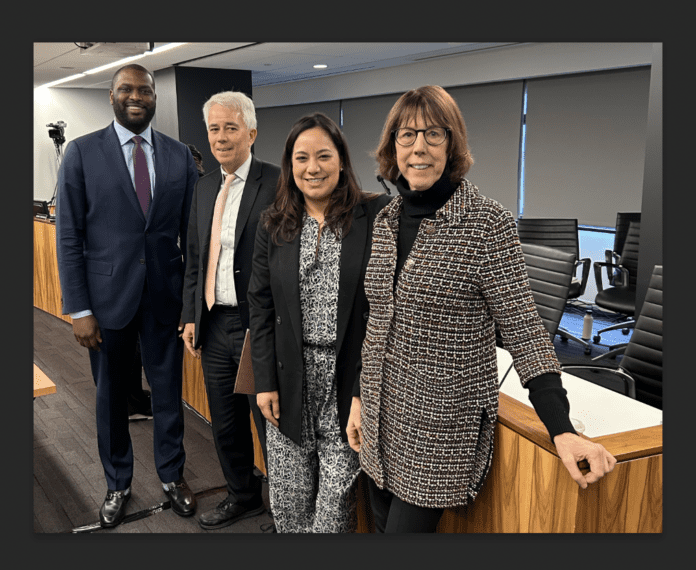by Steve Mulroy —
I have a diverse, unique perspective on racial disparities in the criminal justice system.
I’ve been a Department of Justice (DOJ) civil rights lawyer and a federal prosecutor.
I’ve practiced criminal prosecution and defense.
I’ve legislated on civil rights and criminal justice issues, the two areas of my teaching and scholarship as a law professor.
And I’m the elected DA (District Attorney General) of Memphis and Shelby County, which has significant crime issues and high-profile civil rights violations, including the tragic killing of Tyre Nichols this year.
While stark, Shelby County’s civil rights-criminal law issues are sadly not unique. Shelby is slightly majority Black in population, but almost 90 percent Black in homicide victims.
This echoes the national trend. DOJ data shows Black people as 13percent of the U.S. population but nearly 50 percent of homicide victims.
A recent National Academies Press study showed that Black and Native Americans are by far the most likely to be victimized in severe violence.
While inter-racial disparities in nonfatal violence have been narrowing, the murder disparity remains stubbornly high.
Of course, these same racial and ethnic disparities are just as stubborn when it comes to the other end of the justice system.
In our slightly majority-Black county, Black residents make up almost 80 percent of our criminal defendants.
A few years back, DOJ sued our Juvenile Court for discrimination, citing statistics that showed that, even controlling for offense level and criminal history, a Black teen was 2 to 3 times more likely than a white teen counterpart to be arrested, detained, and transferred to adult court.
Nationally, countless studies show persons of color are significantly more likely than whites to be stopped, searched, arrested, convicted, and sentenced harshly.
This holds for offenses like traffic violations and drug possession, where whites offend at the same rate as other ethnic groups.
The sad reality is that persons of color are disproportionately represented among both victims and defendants: Crime is a civil rights issue.
It is not paradoxical to conclude that minority neighborhoods are both overpoliced and under policed.
Police often engage in racial profiling in such neighborhoods for minor offenses with little relation to public safety, while not focusing enough on intense public-safety-oriented investigations and crime prevention strategies given the crime rates.
The former is the subject of a current DOJ pattern and practice investigation in Memphis.
Just as it is not paradoxical to call for more help for crime victims but less racial profiling, there is no inherent conflict between criminal justice reform and public safety, despite the attempts by some to blame recent crime rises on reform.
In Memphis, our consistent crime solution for the past decade or more has been to lock more people up and lock them up longer. It manifestly didn’t work. We saw steadily rising violent crime rates.
In Tennessee, the prison population more than doubled from 1991 to 2018, with a 68 percent higher incarceration rate.
The average sentence length also increased during this period. Our incarceration rate is 22 percent above the national average. But during that period, the crime rate rose and stayed higher than the national average, even as the national crime rate went down.
America mirrors this dynamic.
Until a few years ago, we’d been on a nationwide mass incarceration binge for decades with little to show for it.
We have 5 percent of the world’s population, 25 percent of the global incarcerated population, and the highest homicide rate among developed countries.
Comparing “reform” and “traditional” criminal justice regimes belies any narrative that reform allows crime to breed.
Per capita murder rates are 40 percent higher in “Red states” versus “Blue states.”
Some discount this, saying the problem is Blue cities in Red states, but that doesn’t work either.
As discussed last year in The Economist, hardly a progressive journal, crime rose at the same rate in cities with “reform” DAs as with “traditional” DAs.
The Economist cited a 2021 study by scholars at the George Mason University Antonin Scalia Law School (again, hardly harboring a progressive bias), which examined 35 jurisdictions where reform DAs implemented bail reforms, reductions in nonviolent misdemeanor prosecutions, etc., as well as a similar study on homicide rates conducted by esteemed Fordham Univ scholar John Pfaff.
A 2022 University of Toronto study of 65 cities, plus all counties in Florida and California, reached a similar conclusion.
Similarly, in the first 12 years of this century, crime rates fell faster than the national average in New York and New Jersey, even though they reduced their prison population by a fourth while the U.S. increased theirs by 10 percent.
Time doesn’t permit me to rattle off the lengthy list of “reform” DA jurisdictions with dropping crime rates in recent years or the equally lengthy list of “traditional DA” jurisdictions with rising crime rates.
Nor would I claim that all “reform” jurisdictions always outperform others in crime metrics. But the data’s clear that reform doesn’t raise crime.
And there’s a plausible intuitive explanation behind these reams of stats, one that might suggest a course of action on the crime victimization disparities.
Minority communities need the most help from law enforcement but are understandably the most skeptical of our system’s fairness.
Reforms can restore community confidence in the system’s fairness, which in turn can get the community to cooperate with law enforcement – providing tips, reporting crimes, and serving as witnesses.
In my view, community cooperation is the single most important thing we can do to bend the curve on crime – the most pressing civil rights issue of our time.
(Reach the office of Memphis-Shelby County District Attorney Steve Mulroy at info@scdag.com.)



